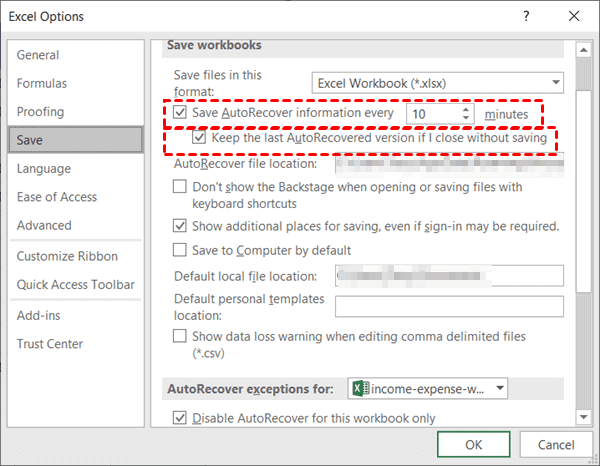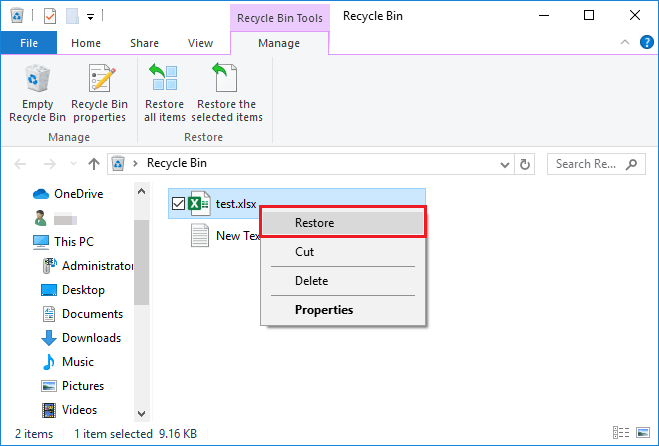Recover Deleted Data from Excel 2003: Simple Solutions

Excel 2003 might seem ancient, but many businesses still rely on this version for various purposes. Accidental deletion of data in Excel 2003 can be a disaster, especially when critical information or long-term compiled spreadsheets are involved. However, there are several ways to recover this lost data or prevent the problem in the first place. This blog post will explore both recovery techniques and preventative measures to help you manage your Excel data effectively.
Understanding Excel 2003 Data Recovery

Excel 2003, like many software applications, does not have an in-built recycle bin feature for its spreadsheets. Once you delete something, it’s not immediately gone; however, retrieval without specific measures can be challenging.
Data Recovery Options

- AutoRecover Feature: Excel 2003 has an AutoRecover feature that can save versions of your workbook at regular intervals. This feature, if enabled, allows you to revert to an earlier version of your file if it hasn’t been saved recently.
- Backup Files: If you have backup files or regularly save your work, you can use the backup files to restore your data.
- Recovery Tools: Specialized software can sometimes retrieve data from your hard drive or from Excel’s temporary files.
- File Repair Tools: If the file becomes corrupted rather than data being deleted, tools like Microsoft’s own File Repair can often repair and recover data.
Steps to Recover Deleted Data Using AutoRecover

To recover data using the AutoRecover feature:
- Open Excel 2003 and select
Filefrom the menu bar. - Click on
Open. - In the file dialog, select the file you were working on.
- If Excel AutoRecover has a recovery version, it will offer to open this version. Select it and see if it contains the lost data.
⚠️ Note: AutoRecover files might not have every change up to the point of deletion, especially if it was not set to recover frequently enough.
Using Backup Files

If you have backup files:
- Locate the backup file in your backup folder.
- Open the backup file directly in Excel 2003.
- Compare the backup with your current file to manually recover the lost data.
Using Recovery Software

Various recovery tools are available:
- Stellar Phoenix Excel Recovery: This software specializes in recovering files from Excel.
- Recuva: A general data recovery software that can help recover Excel files.
- Recover My Files: Another option for Excel file recovery.
🚫 Note: Always download recovery software from official or trusted sources to avoid malware risks.
Preventing Data Loss

The best way to handle data loss is to prevent it:
- Regular Backups: Set up automatic backups of your Excel files.
- AutoRecover: Ensure AutoRecover is enabled in Excel 2003. Go to
Tools>Options>Save, and adjust settings for AutoRecover. - Cloud Storage: Use cloud services like Google Drive or Microsoft OneDrive for additional file versioning and easy access.
- Data Validation: Use data validation rules to prevent accidental data entry errors that might lead to deletions.
| Feature | Description |
|---|---|
| AutoRecover | Saves temporary copies of your workbook at set intervals. |
| File Backup | Creates duplicate copies of your file for later recovery. |
| Cloud Sync | Offers automatic file versioning and offsite backups. |

In summary, while recovering deleted data from Excel 2003 can be complex, several methods exist to retrieve your lost information. From using Excel's built-in features like AutoRecover to employing specialized recovery tools, there are options available. The emphasis, however, should be on prevention through regular backups, proper settings configurations, and cloud storage use. By implementing these strategies, you not only safeguard your data but also reduce the risk of future data loss incidents.
Can I recover files deleted from the Recycle Bin?

+
Yes, data recovery software like Recuva or Stellar Phoenix can sometimes retrieve files even after they’ve been deleted from the Recycle Bin.
How often should I set Excel to AutoRecover?

+
The default setting is every 10 minutes, which is generally adequate. However, for critical work, setting it to 5 minutes might be safer.
What should I do if Excel won’t open my file?

+
Try using file repair tools like Microsoft’s Open and Repair option. If that fails, consider recovery software or check if you have backups or cloud versions of the file.



